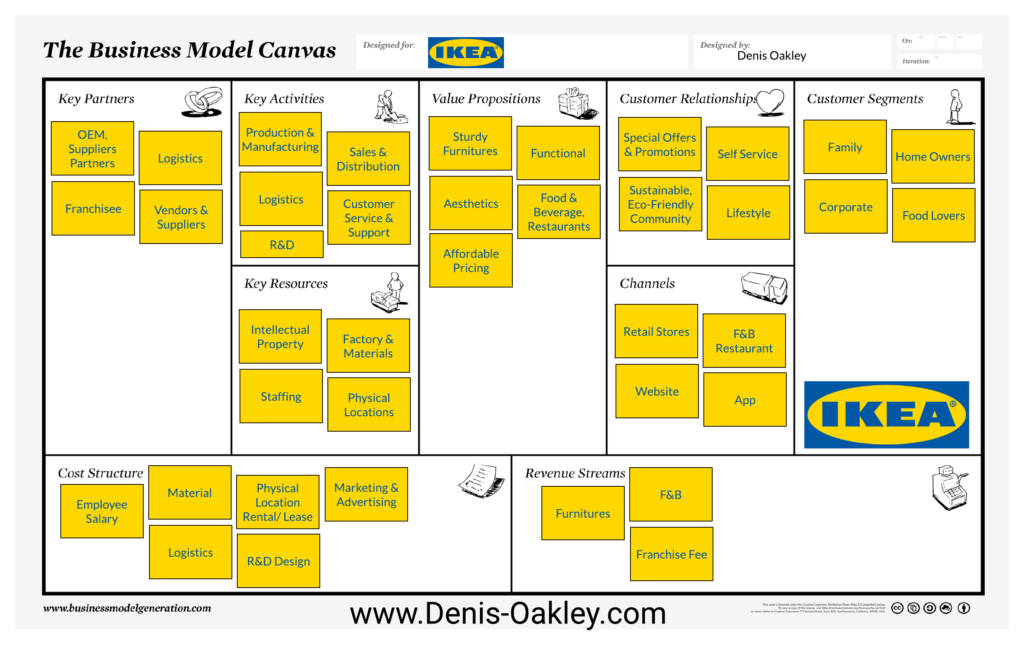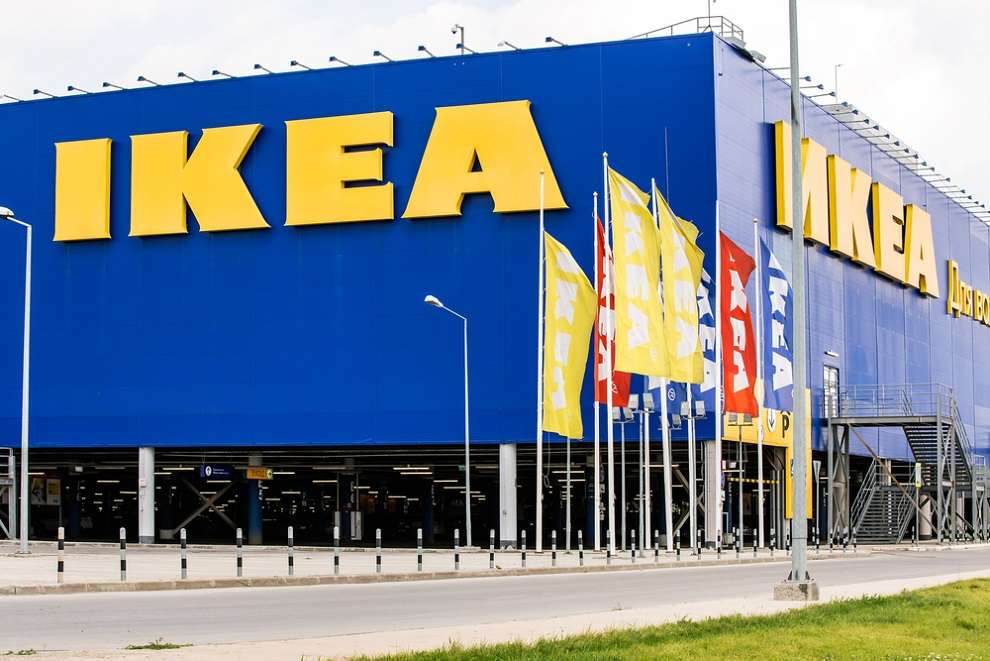IKEA is providing its service to about 1.1 million customers per day. Its fame can be the judge from its debut in London in 2005 where even before opening the door, 6,000 people arrived to shop the furniture. It has achieved this success by offering a unique value proposition to consumers which is leading-edge Scandinavian design at bargain prices.
Because IKEA inherited a unique design from Sweden and the lower bargain price advantage they get by making a compact product which comes in boxes and requires complete assembly at home, it reduces shelf space, becomes easier to transport, and deliver. IKEA followed its founder’s mission statement that stated “People have very thin wallets. We should take care of their interests.“
IKEA’s learning capability also helps it to flourish in the furnishing market. They appreciate the local taste and make their product according to consumers’ needs. For example, they have changed their small glasses into big glasses for U.S.market. Same as they have done in the Hispanic market, IKEA finds out the Hispanics behavior towards shopping and understand their attitudes, then make their store according to Hispanics’ requirement such as additional seating and dining space, brighten the color palettes and hang more picture frames on the walls.
IKEA has 446 stores around the world and has many growth opportunities that remain untouched which they are planning to avail them of.
Today, IKEA is changing lives together with social entrepreneurs. For example, the company is working towards providing Brazilian families with adequate housing. It wants to create a better everyday life for as many people as possible including the millions who are vulnerable and marginalized. Improving lives means enabling a more inclusive society, where people have the opportunities to provide for themselves and their families. IKEA Social Entrepreneurship is one way of making this a reality.
In addition, the biggest IKEA franchisee the INGKA Group is aiming for zero emissions from home deliveries by 2025. As of January 2019, INGKA has already achieved the zero-emissions target for Shanghai, a year ahead of schedule.
60% of the materials IKEA uses are renewable and 10% are recycled. The ambition is to reach a combined total of 100% by 2030. A new innovative technology developed in collaboration with partners such as the H&M group: it’s based on cellulose from wood that they call Tree To Textile. Textile developments using cellulose are thought to have great potential to replace or complement both cotton and oil-based fabrics like nylon or polyester. The project is still in its research phase, but IKEA is now taking the first steps to industrialize the technology.
2019 Highlights

FY19 has been a successful year for the IKEA franchise system. Retail sales grew by 6.5% compared to FY18. Total retail sales, which includes sales of IKEA products, food, and services to IKEA customers, amounted to EUR 41.3 billion. 12 new IKEA stores opened around the world, and nine markets introduced e-commerce. Around 2.8 billion people visited the IKEA website, and e-commerce sales grew by 43%.
In February a new commercial theme began. “Get ready for life” put the bedroom and bathroom in focus, including lots of new products as well as some old favorites. The PLATSA open wardrobe system and
KUNGSBLOMMA bedroom textiles were popular with new families. “Get ready for life” continues until August 2020. Retail sales growth means positive results for Inter IKEA Group, which includes the IKEA franchisor, range, supply, and certain industrial activities. Inter IKEA Group reached total revenues of EUR 25.3 billion and a net profit of EUR 1.5 billion in FY19.
Also Read this amazing case study on IKEA “Glocal” Marketing Strategy In China
The IKEA Business Idea

The 8 IKEA Key Values
1. Togetherness: Togetherness is at the heart of the IKEA culture. they are strongest when they trust each other, pull in the same direction, and have fun together.
2. Caring for people and the planet: IKEA wants to be a force for positive change. they have the possibility to make a significant and lasting impact — today and for the generations to come.
3. Cost-consciousness: As many people as possible should be able to afford a beautiful and functional home. IKEA constantly challenge themselves and others to make more from less without compromising on quality.
4. Simplicity: IKEA is informal, and see bureaucracy as the biggest enemy.
5. Renew and improve: IKEA is constantly looking for new and better ways forward. Whatever they are doing today, they can do better tomorrow. Finding solutions to almost impossible challenges is part of our success and a source of inspiration to move on to the next challenge.
6. Different with a meaning: IKEA likes to question existing solutions, think in unconventional ways, experiment, and dare to make mistakes – always for good reason.
7. Give and take responsibility: Giving and taking responsibility are ways to grow and develop as individuals. Trusting each other, being positive and forward-looking inspires everyone to contribute to development.
8. Lead by example: IKEA team sees leadership as an action, not a position.
Marketing Strategies
IKEA is focused on creating good relationships with its customers, who value their products for being very affordable and modern looking. They use inexpensive materials in a new way, thus reducing production, distribution, and retail costs. However, the low price would have lost its appeal over time if the good quality was not ensured. This is not the case with IKEA. It maintains a good relationship with its suppliers who sell them good quality material at low prices, and they can cost-effectively produce designs that are bought in bulk by keeping the costs down.
Following are few marketing strategies are used by IKEA,
- IKEA offers a broad and diverse range of products at low cost. They focus on the product and price element of the marketing mix
- The furniture retailer uses mono-segment and adaptive product positioning by targeting cost-conscious customers who want to get the most value for the money paid
- They integrate several marketing channels of communication such as print and media advertising, sales promotions, events and experiences, public relations, and direct marketing.
To read more content like this, subscribe to our newsletter.



